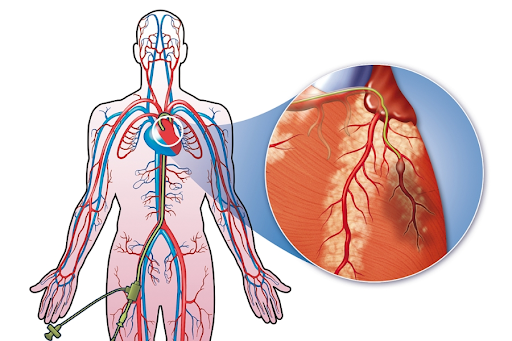A pacemaker is a small electronic device implanted in the chest or abdomen to regulate the heart’s rhythm and treat certain heart rhythm disorders, also known as arrhythmias. The pacemaker generates electrical impulses that stimulate the heart muscle to contract and maintain a normal heart rate, ensuring that the heart beats in a coordinated and efficient manner.
Components
A pacemaker consists of several components:- Pulse Generator: The pulse generator is the main component of the pacemaker and contains the electronic circuitry, battery, and programmable settings. It generates electrical impulses or pacing pulses that are delivered to the heart to regulate its rhythm.
- Leads: Leads are insulated wires that connect the pulse generator to the heart muscle. They carry the electrical impulses from the pulse generator to the heart and transmit signals from the heart back to the pulse generator for monitoring.
- Electrodes: Electrodes are located at the tip of the leads and make direct contact with the heart muscle. They deliver pacing pulses to specific chambers of the heart (atria or ventricles) and sense the heart’s natural electrical activity.
Function
The pacemaker functions by:- Sensing the heart’s natural electrical activity through the electrodes at the tip of the leads.
- Analyzing the electrical signals to detect abnormal heart rhythms or pauses in the heart’s natural pacemaker (sinoatrial node).
- Delivering electrical impulses or pacing pulses to the heart muscle when necessary to maintain a normal heart rate and rhythm.
- Adjusting the pacing rate and mode based on the patient’s physiological needs and programmed settings.
- Bradycardia: Slow heart rate due to dysfunction of the heart’s natural pacemaker or conduction system.
- Heart Block: Interruption or delay in the conduction of electrical impulses from the atria to the ventricles.
- Sick Sinus Syndrome: Dysfunction of the sinoatrial node, leading to bradycardia or pauses in the heart rhythm.
- Tachy-brady Syndrome: Combination of fast and slow heart rhythms alternating unpredictably.
Types
- Single-Chamber Pacemaker: Paces or senses activity in either the atria or ventricles.
- Dual-Chamber Pacemaker: Paces or senses activity in both the atria and ventricles, allowing for more physiological pacing.
- Biventricular (CRT) Pacemaker: Also known as cardiac resynchronization therapy (CRT), paces both ventricles to improve coordination of heart contractions in patients with heart failure and left bundle branch block.
- Temporary Pacemakers: Used for short-term management of heart rhythm disorders, such as during surgery or while awaiting permanent pacemaker implantation.
- Permanent Pacemakers: Implanted for long-term management of chronic heart rhythm disorders.
- Leadless Pacemakers: Small, self-contained devices implanted directly into the heart without leads, reducing the risk of lead-related complications.
Implantation
- Incision: A small incision is made in the chest or abdomen, and a pocket is created to accommodate the pulse generator.
- Lead Placement: Leads are inserted through a vein into the heart and positioned in the desired locations using fluoroscopic guidance.
- Testing: The leads are connected to the pulse generator, and the pacing and sensing thresholds are tested to ensure proper function.
- Implantation: The pulse generator is placed in the pocket, and the incision is closed with sutures or surgical adhesive.
Follow-Up
After pacemaker implantation, patients undergo regular follow-up visits with their cardiologist or electrophysiologist to monitor the device function, adjust programming settings as needed, and replace the battery when it is depleted (typically every 5-10 years). Pacemaker checks may be performed remotely using specialized equipment and telemetry technology.Risks and Complications
Pacemaker implantation is generally safe, but it carries some risks and potential complications, including:- Infection at the implant site
- Bleeding or hematoma
- Pneumothorax (collapsed lung)
- Lead dislodgement or malfunction
- Allergic reaction to the device materials
- Complications related to anesthesia or surgery



